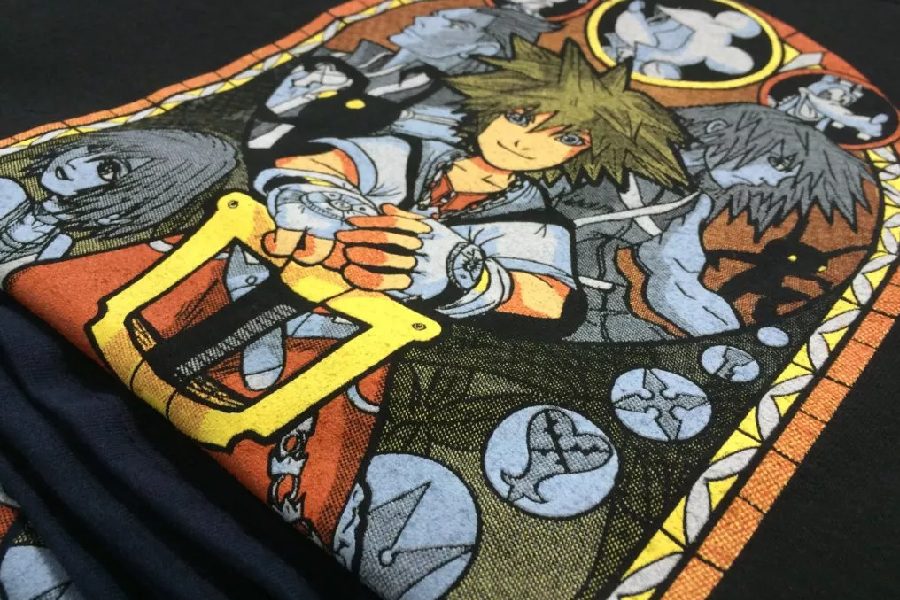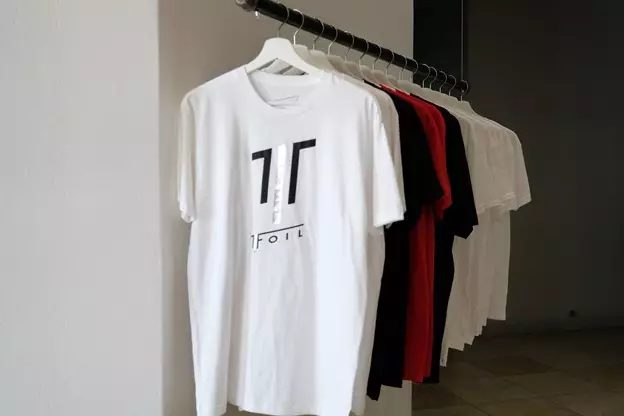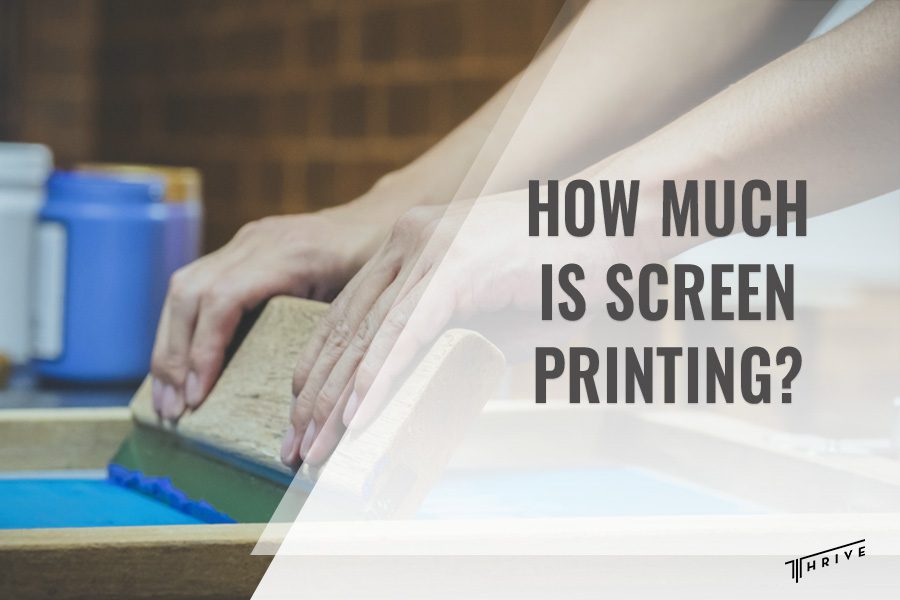Screen printing, also known as silk screening, is a versatile printing technique used to transfer designs onto various surfaces, including fabric, paper, glass, metal, and plastic. The process involves creating a stencil (or screen) with open areas that allow ink to pass through.
This process is widely used for creating custom designs on clothing, posters, signage, promotional products, and more. It’s known for its durability, vibrant colors, and the ability to print on a wide range of materials, making it a popular choice for both artistic and commercial applications.
In this article, we’ll break down the factors that influence screen printing costs and provide you with practical insights on how to estimate expenses accurately.
Whether you’re a business looking to brand your merchandise or an individual with a unique design in mind, this article explores in depth the factors that determine how much is screen printing and what the process typically costs.
How Much is Screen Printing?
When it comes to the cost of screen printing, several factors come into play. These include the number of items you want to print, the range of colors in your design, the type of materials you’re printing on, and the complexity of your design.
Small print runs tend to have a higher cost per item, while larger orders may offer cost savings. So, a bulk order may help you save money for every item that is printed upon. Let us dive deeper into the factors that determine how much is screen printing.

Key Factors Influencing Screen Printing Costs
Screen printing costs are influenced by various factors, and understanding these key elements is essential for estimating expenses accurately. Let’s delve into the factors that impact the cost of screen printing:
1. Quantity of Items to be Printed
The volume of items you intend to print plays a significant role in cost determination. Screen printing is well-suited for large print runs, as the setup costs are spread across a greater number of items. Therefore, the more you print, the lower the cost per item.
Consider your needs carefully and opt for larger quantities when feasible to maximize cost-efficiency.
2. Number of Colors in the Design
The complexity of your design, as indicated by the number of colors used, directly affects expenses. Here’s the deal: each color in your design requires its own screen and setup. So, if you’ve got a design with lots of colors, it can ramp up the expenses.
If you’re keeping an eye on your budget, think about streamlining your design down to just one color or getting crafty with shading techniques to give the impression of more colors. That way, you can keep things cost-effective without sacrificing style.
3. Type of Material Being Printed On
The material you choose for your printing canvas is another key factor in cost calculations. You see, different materials like clothing, paper, glass, or plastics might call for specific types of inks or pre-treatments.
These variations can influence how much is screen printing for you. So, pick a material that not only suits your design but also keeps things friendly to your budget.
4. Complexity of the Design
The level of complexity in your design really affects how much time and effort goes into getting everything ready for the screen printing process.
Designs that are super detailed and intricate demand a lot of careful attention, which can mean more hours spent and potentially higher costs due to the extra production time. If you’re looking to keep costs down, consider going for simpler, straightforward designs that can be handled more swiftly and with fewer expenses.
If cost-efficiency is a priority, opt for simpler, more straightforward designs that can be executed more quickly and affordably.
5. Printing Location and Size
The size and placement of your print on the item can affect costs. If you’re going for larger prints or unconventional locations on your item, it might require extra setup and alignment work, which can bump up expenses.
So, it’s a good idea to think about the practicality and cost implications of your chosen print size and location when planning your project.

Cost Breakdown
Here’s an in-depth look at the typical expenses associated with screen printing: This cost breakdown will give you a clearer sense of how much is screen printing.
1. Setup Fees
Setup fees come into play at the initial stages of your screen printing project. These fees encompass the preparation of screens and stencils for your specific design.
Screen preparation involves coating screens with light-sensitive emulsion, drying them, and then exposing them to your design. Stencil creation also involves meticulous craftsmanship to ensure precise results. Setup fees can vary based on the complexity of your design and the number of screens required.
2. Per-Item Printing Costs
The per-item printing cost is a crucial part of your screen printing expenses. It’s what you pay for each item in your order. The great thing about screen printing is that this cost usually goes down as you order more items.
So, the bigger your order, the less you pay for each item. Per-item costs are influenced by factors like setup fees, the price of ink, and the material you’re printing on. It’s one of the perks of screen printing – the more you print, the less you pay per piece!
3. Additional Charges for Extra Colors
Screen printing employs a separate screen for each color in your design. As a result, projects with multiple colors will incur additional charges. These extra costs account for the need to prepare and set up each color individually. To manage costs when dealing with multi-color designs, consider simplifying your design or selecting a more limited color palette to minimize expenses.
4. Bulk Printing Discounts
Screen printing companies often offer volume-based discounts to incentivize larger orders. These discounts can significantly reduce the overall project cost.
Be sure to inquire about bulk pricing options when planning your screen printing project, as they can lead to substantial savings. You can inquire how much is screen printing cost for a certain number of items.
5. Screen and Stencil Creation Expenses
The creation of screens and stencils involves both material and labor costs. Screen preparation includes the purchase of screens and emulsion materials, as well as the labor required for coating, drying, and exposing screens.
Stencil creation necessitates precision in transferring your design onto the screen. The complexity and size of your design can impact the labor and material costs associated with this process.
Tips for Cost Savings
When it comes to screen printing, finding ways to save on expenses is a smart approach. Here are some practical tips for individuals and businesses looking to reduce screen printing costs:
- Simplify Your Design
- Streamline Color Choices: Reducing the number of colors in your design can significantly cut down on costs, as each color requires a separate screen and setup fee.
- Opt for Vector Graphics: Using vector graphics for your design ensures sharp and clean lines, which can be printed with greater precision and efficiency.
- Order in Bulk
- Leverage Quantity Discounts: Take advantage of bulk printing discounts. Ordering a larger quantity of items at once can dramatically lower the per-item printing cost.
- Plan Ahead: Consolidate your printing needs to minimize the number of small orders. Batch your projects to optimize your printing costs.
- Choose Cost-Effective Materials
- Select Budget-Friendly Apparel: If you’re printing on apparel, choose garments that are cost-effective while maintaining quality. Consider cotton blends or standard cotton options for budget-friendly choices.
- Evaluate Material Costs: For non-apparel projects, such as paper or promotional items, carefully assess material options. Sometimes, a slightly different material can save you money without compromising quality.

Frequently Asked Questions
1. How much does it cost to screen print a shirt?
The cost of screen printing a shirt can vary widely depending on factors like the design complexity, the number of colors, and the quantity of shirts you’re printing.
Generally, for a simple one-color design on a standard shirt, you can expect prices starting from around $10 per shirt for a small order. However, as you increase the quantity and complexity, the cost per shirt tends to decrease.
2. Is screen printing cost-effective?
Yes, screen printing is often cost-effective, especially for larger print runs. While there may be setup fees and initial costs, the per-item printing cost decreases as the quantity increases, making it an economical choice for bulk orders. Additionally, screen printing offers vibrant, long-lasting prints, adding to its overall value.
3. Why is screen printing so expensive?
Screen printing can seem expensive due to setup fees, especially for designs with multiple colors, as each color requires its own screen and setup.
However, these costs are typically spread across a larger quantity of items, making it more cost-effective for bulk orders. The quality and durability of screen printing justify the initial expenses for many customers.”
Conclusion
The article explores different components that effect the cost of screen printing. You learn about the impact of design complexity, the number of colors, materials, and printing location on the final cost of screen printing. You also learn about various ways to reduce expenses.
When searching for screen printing services, obtain multiple quotes, clarify setup fees, and explore bulk discounts. Ultimately, screen printing offers creative possibilities, and with budget-conscious decisions, you can bring your designs to life while keeping costs in check.
Robert Fisher is the founder and CEO of Thrive Screen Printing and brings extensive experience in the screen printing and fulfillment industry.


